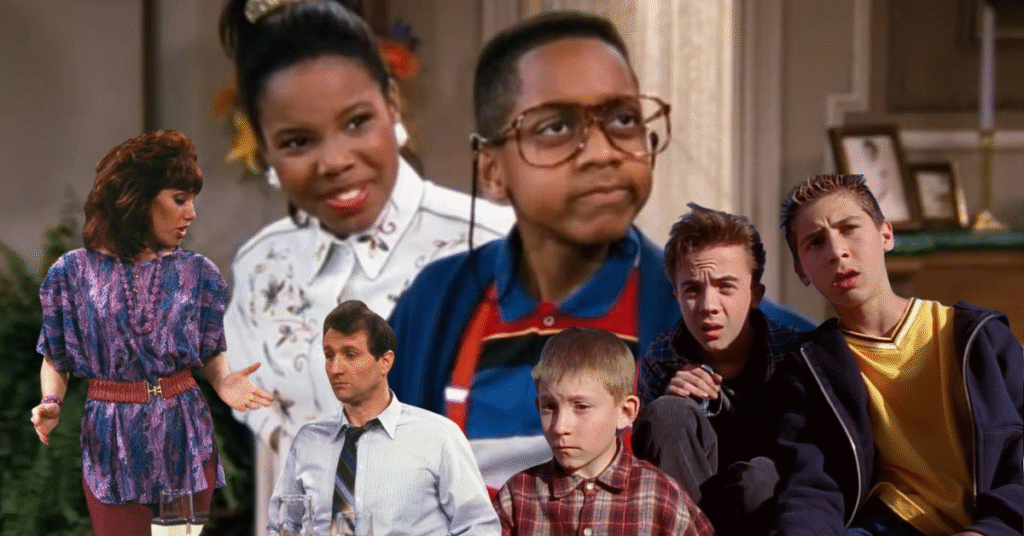
Being of a certain age, when I was growing up, the evening TV time was dominated by family sitcoms. Every night, there was a half-hour, hilarious show about family values, jobs, or the weird antics of relatives. These shows weren’t cynical or terribly deep (though some tackled heavy issues in “very special” episodes), but they were a lot of fun. Since this was the days before devices and streaming, we all watched and laughed together.
Nowadays, the sitcom has evolved from the days of “the boss is coming to dinner” type stories and often relies on the same kind of strange encounters and situations we encounter in our day-to-day lives. They tend to rely more on cringe and awkward humor rather than strictly family situations, but many keep the spirit of those shows that came before them, even if it’s a “work family” rather than actual relations.
Here’s a list of some of the best sitcoms my family has enjoyed over the years. Some of these, I watched with my family growing up, and some I watch now with my own children. Some of them are rife with schlock, and others are edgy new-school affairs, but one thing at the center of all of them is family for better or worse. Where applicable, i’ve included some of the family values and general life lessons that each of these shows help explain to children and teens.
Full House (1987-1995), Fuller House (2016-2020)
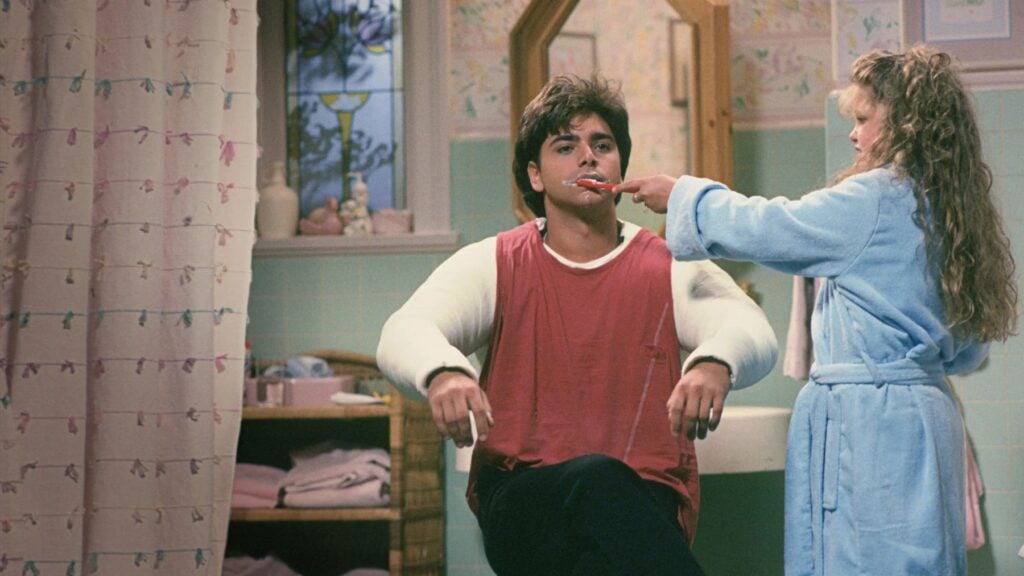
If you are looking for wholesome, you’ve found it. Full House featured Bob Saget as Danny Tanner, a widower raising his three daughters. Living in the house to help out are Danny’s best friend, Joey (Dave Coulier), and rock ‘n roll brother Jesse, played by the ageless John Stamos. The show worked from two perspectives: the fish-out-of-water aspect of three dads in one house (it was the ”80s), as well as the challenges facing the daughters, DJ, Stephanie, and Michelle. In 2016, the show was revived with a similar concept, but this time, a grown-up DJ had to raise her kids with her sister, Stephanie, and best friend from the original series, Kimmy Gibbler.
Both eras of Full House are filled with wholesome family values, kid antics, and genuine chemistry between cast members. The Tanners truly felt like a family, and even when they were at odds, they were always there to support each other and learn a valuable lesson in the process. The Olsen Twins (Mary-Kate and Ashley) became massive stars out of the success of Full House. While some of the episodes and humor are very, very dated, there’s still a family structure at heart and some great slapstick to laugh at.
Roseanne (1988-1997), The Connors (2018-2025)
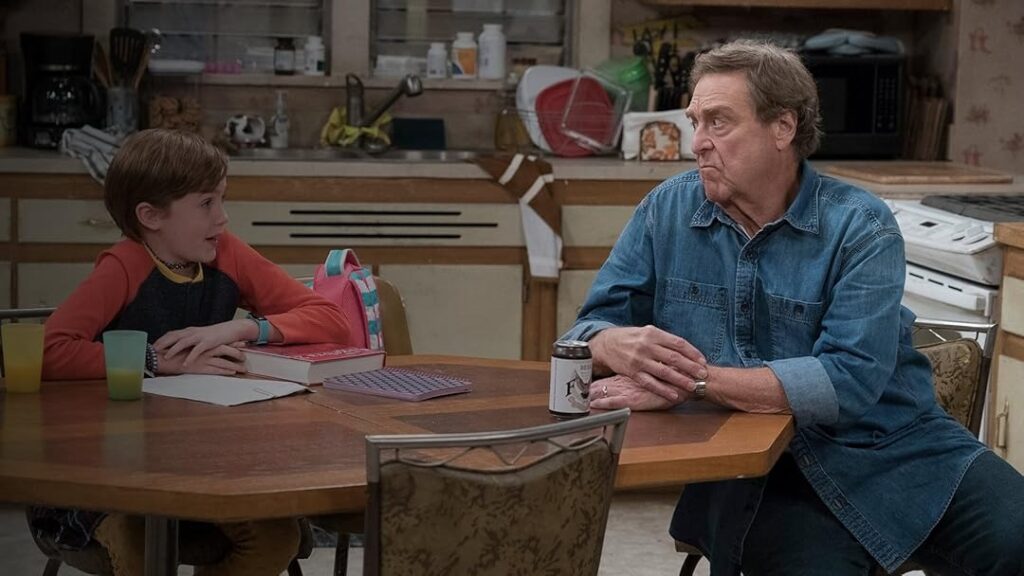
Another show that received a modern-day reimagining, Roseanne starred comedian Roseanne Barr as the matriarch of the Connors, a working-class family in Illinois. Unlike many shows of its era, Roseanne did not shy away from economic, relationship, and other real-world troubles that families faced. The Connors were not well off and they dealt with these issues with a mix of humor and brutal honesty. The show’s authenticity created a loyal fanbase that appreciated the show’s honesty about the challenges of middle-American life.
Roseanne Barr’s unapologetic, sarcastic humor and the show’s unbridled honesty created an atmosphere that was not only relatable. Still, they stood out like a sore thumb in the landscape of happy, shiny sitcom families. Difficult topics like domestic violence, teen pregnancy, and economic hardship resonated with viewers and probably kick-started more than a few hard conversations in households. In Roseanne, parents weren’t perfect, and children faced real consequences. Roseanne didn’t reset every week, and the reboot, The Connors, continued the vibe of honest, hardworking people just trying to get by, which remains very relevant today.
Family Matters (1989-1998)
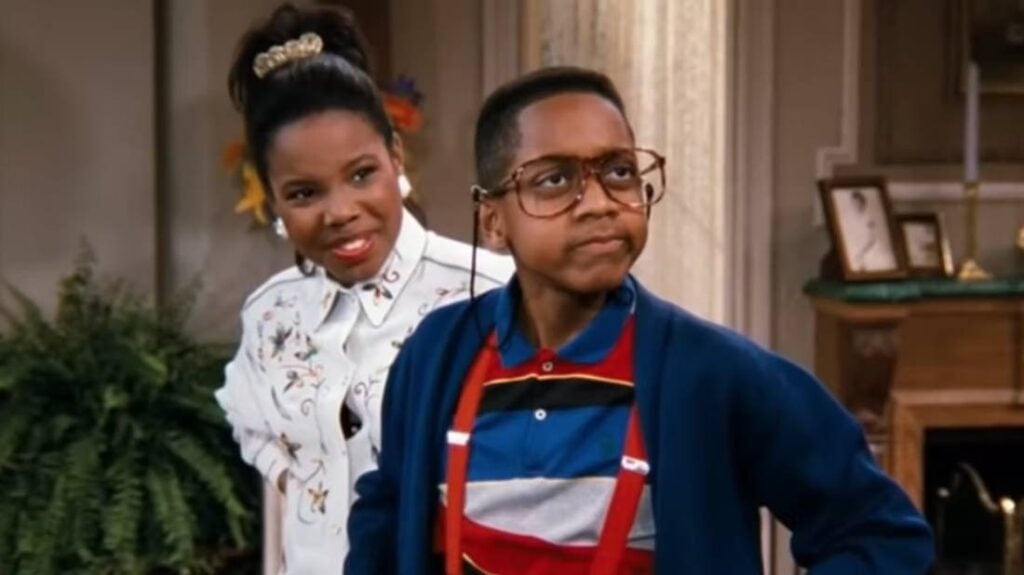
Family Matters began as a show about the Winslow family. Carl, a police officer, his wife Harriette, and their children. Eventually, though, the show shifted its focus to Jaleel White’s character, the nerdy Steve Urkel, which we’ll discuss in a moment. Generally speaking, though, Family Matters was a show about a family dealing with everyday problems of kids and parents. While it got a little… weird in the final seasons, Family Matters had a lot of heart and deserves its place as a classic.
Now, let’s talk about the Urkel in the room. In the beginning, Urkel was simply comic relief. However, his popularity skyrocketed, leading the show to change course and feature more and more stories centered around Steve than the Winslows. Elements of physical comedy and even science fiction began to become more commonplace, and the show evolved in response. Oddly enough, in 2025, this descent into weirdness makes Family Matters even funnier and worth a re-watch.
Home Improvement (1991-1998)
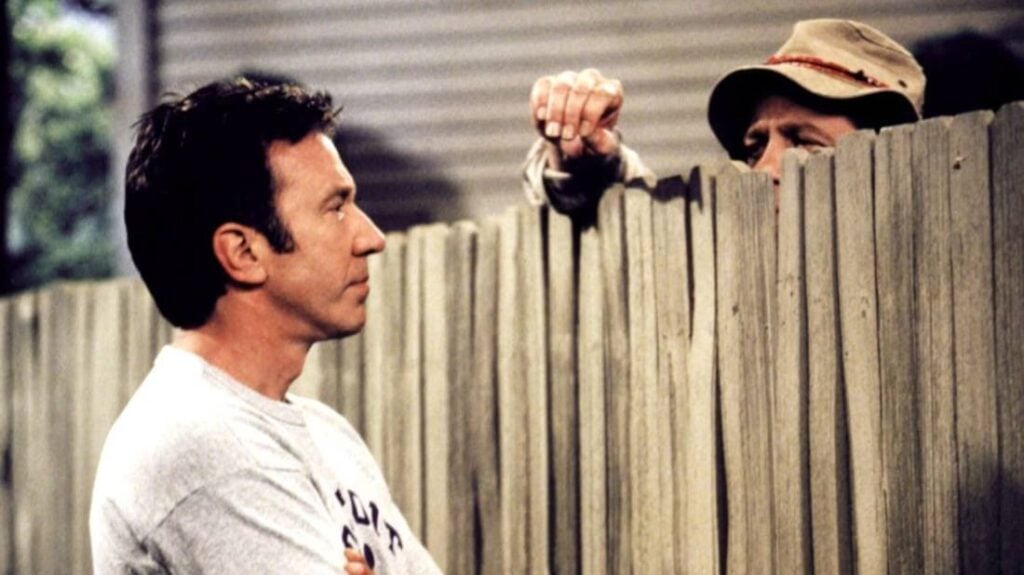
Based on Tim Allen’s stand-up act, Home Improvement featured Allen as Tim “The Tool Man” Taylor. Taylor is the hapless host of “Tool Time,” a home improvement show, and along with wife Jill, is raising three sons. The cast was rounded out by Taylor’s co-host, Al, and the faceless wisdom-dealing neighbor, Wilson. Home Improvement was interesting because it often challenged the typically masculine point of view of its lead character, Taylor, who was usually more wrong than right. Its family dynamic was centered on learning and growing, with plenty of grunts and jokes about cars.
What made Home Improvement stand out at the time was Tim Allen’s relatable portrayal of a well-meaning but often clueless husband and father, a standard trope in sitcoms. But Taylor frequently learned from his mistakes, and when it came to the well-being of his sons, there was usually a very clear right and wrong. Taylor’s wife, Jill, was a strong female character whom women could relate to the same way men could understand Taylor. Home Improvement, like many shows, can feel a little dated at times, but clever writing, heart, and slapstick comedy make it a worthwhile binge.
Boy Meets World (1993-2000), Girl Meets World (2014-2017)
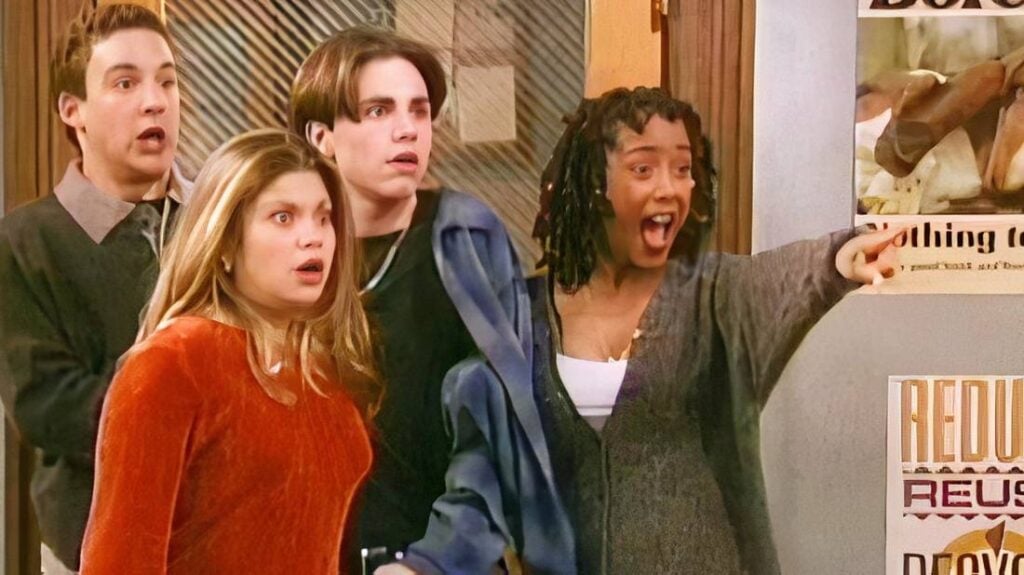
Boy Meets World featured a kid as its main character, but it had strong family vibes. Cory Matthews embarks on a coming-of-age journey with his best friend, Shawn, his girlfriend, Topanga, and his wise teacher/mentor, Mr. Feeney. Boy Meets World guided a whole generation through the typical adolescent experiences of first crushes, friendship challenges, family relationships, and moral dilemmas. The series effectively balanced comedy with life lessons, serving as a great companion during my formative years. Girl Meets World adopted a similar vibe of togetherness, but with Cory and Topanga now parents to a daughter, Riley.
Boy Meets World could navigate serious topics like divorce, death, and social issues while maintaining its comedic heart, all through the eyes of a kid growing up within it. The strong relationship between Cory and Shawn was also innovative because, in an era where boys were taught to be “men,” they had an open and honest friendship, and they relied on each other. Couple that with a wise mentor, Mr. Feeney, cool parents, and an older brother, Eric, who was a friend rather than an adversary, and Boy Meets World was a source of both entertainment and guidance for young audiences.
Fresh Prince Of Bel-Air (1990-1996)
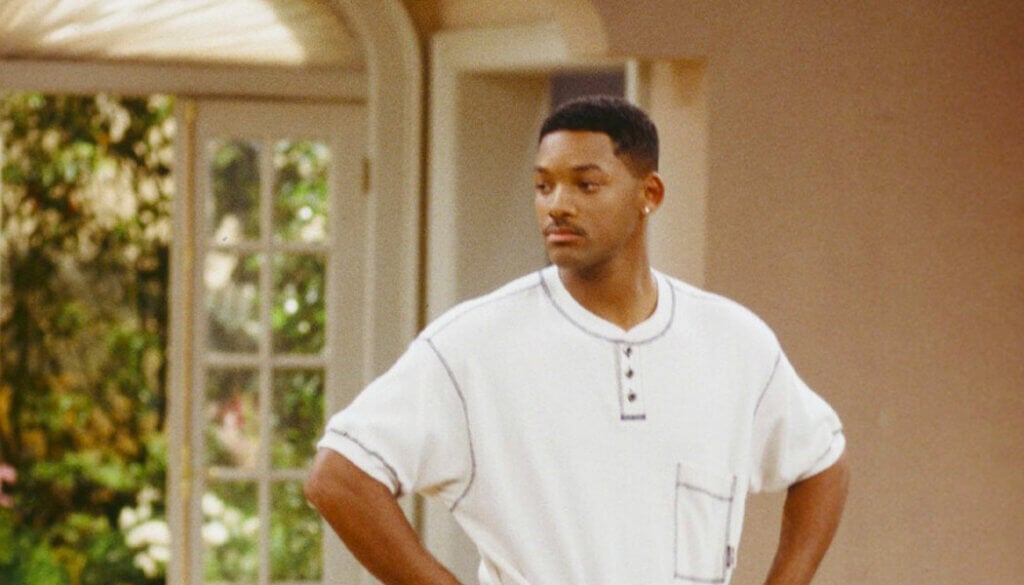
In my humble opinion, The Fresh Prince of Bel-Air is the gold standard for sitcoms of the ’90s. The show followed Will Smith (played by rapper Will Smith) as a street-smart teenager from the inner city of Philadelphia who is sent to LA to live with his wealthy relatives in Bel-Air. Will’s urban background and his cousins’ privileged lifestyle were a treasure trove of comedy, and it also led to both Will and his cousins, Hilary, Carlton, and Ashley learning lessons from each other’s different life experiences. Will’s Uncle Phil becomes a beloved father figure to him and to the audience at large.
The Fresh Prince of Bel-Air slapped a rocket to Will Smith’s back and sent him straight to stardom. The show’s ability to blend issues of class, race, and staying true to oneself was unmatched at the time, and I’d argue, even today. It was both funny and heartfelt, and it created numerous iconic pieces of pop culture that remain alive today. The Carlton Dance, the opening rap, and even the repeated expulsion of Will’s friend Jazz (Played by DJ Jazzy Jeff) are lasting moments from the show. As are the problematic issues it navigated, like racism, police brutality, and economic inequality.
Everybody Loves Raymond (1996-2005)
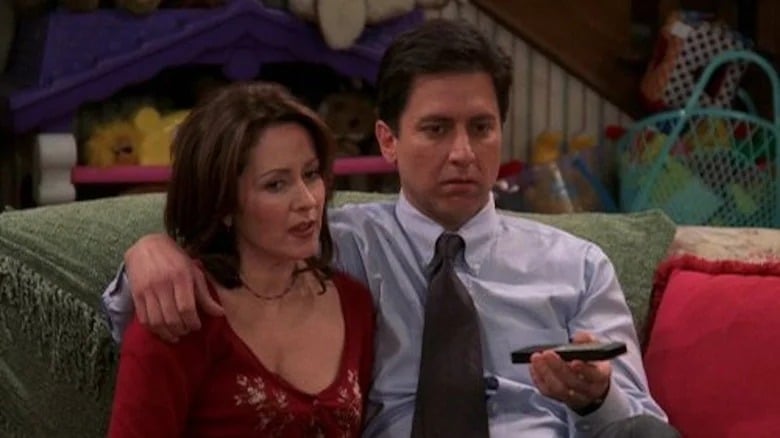
Everybody Loves Raymond starred comedian Ray Romano as sports writer Ray Barone. Ray lives with his wife, Debra, and their three children across the street from his overbearing parents, Marie and Frank. He also has a healthy dose of sibling rivalry with his police officer brother, Robert. Due to the constant interference of Ray’s family, particularly his mother’s passive-aggressive behavior, episodes typically involved family gatherings that devolved into arguments, misunderstandings, and uncomfortable truths about family dynamics.
The simplicity of Everybody Loves Raymond is what makes it endearing. Viewers could easily relate to its painfully accurate portrayal of quasi-functional family relationships and dynamics. Romano skirts the territory of sad sack, but only enough to become something of an everyman, who wants everyone to get along. Doris Roberts as the meddling mother, Marie, steals the show with an absolutely perfect performance. The show managed to make audiences feel less alone in their own family struggles, and viewers could easily see themselves on the screen.
Admittedly, some people find Everybody Loves Raymond to be hard to watch today, but at its heart, it can still teach some valuable lessons, and perhaps the outdated nature of the show can even generate conversations with your own family members.
Malcolm In The Middle (2000-2006)
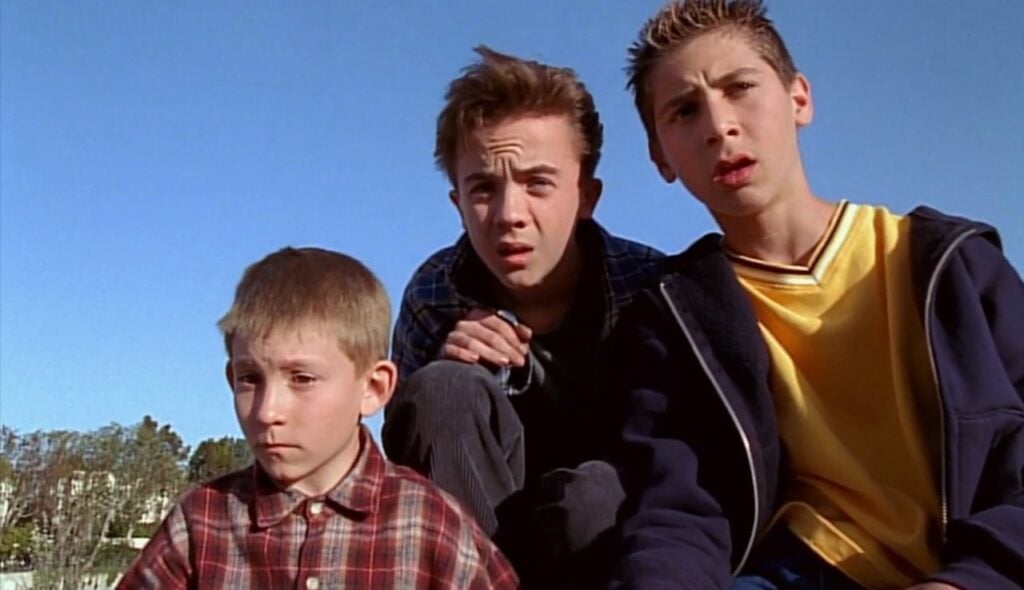
Malcolm in the Middle was a typical family sitcom about a very atypical family. It centered around Malcolm, a gifted child with three brothers. Brian Cranston and Jane Kaczmarek play overwhelmed parents Hal and Lois. The show did not have a laugh track and often featured Malcolm breaking the fourth wall. But it was the absolutely wild nature of the family’s various schemes, punishments, and misadventures that made the show stand out.
Malcolm in the Middle connected with families, kids, and parents alike, because it was unabashedly honest about how chaotic life can be. It was a departure from the typical family sitcom and almost went into satire territory, but the over-the-top characters kept it grounded in a whirlwind of madness. Viewers could easily relate to the frantic vibe and the show’s realistic portrayal of family chaos and the challenges of raising multiple children. Kids loved the brothers’ rebellious and crazy sibling dynamics, and the series won critical acclaim for its innovative cinematography, sharp writing, and Frankie Muniz’s performance as Malcolm.
With a limited series reboot on the horizon, now is the perfect time to catch up with Malcolm and his family before the new episodes air.
Modern Family (2009-2020)
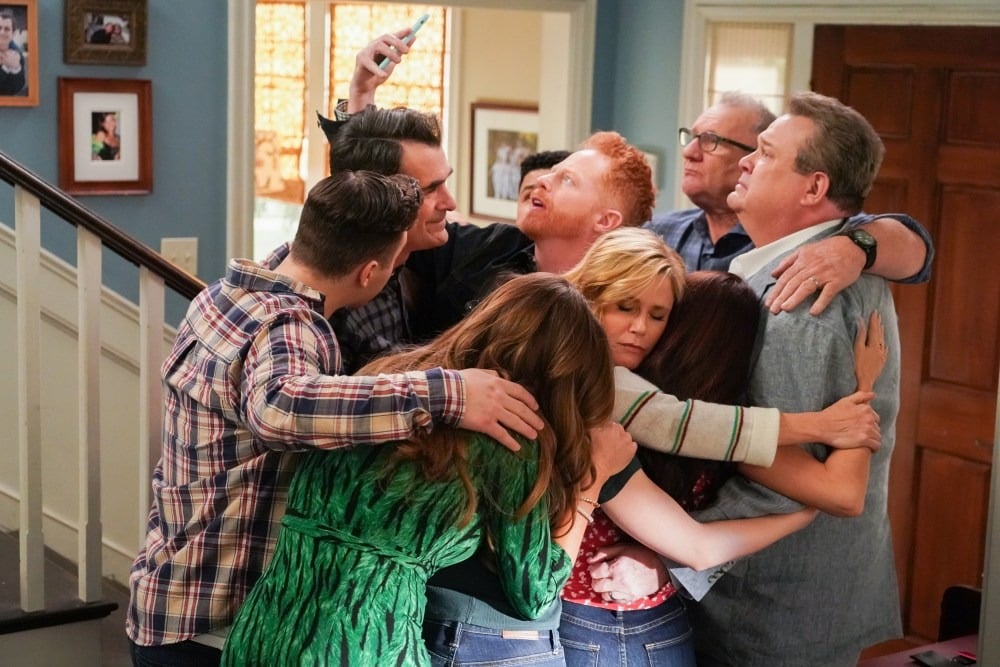
Like its name, Modern Family told tales of just that. Parents, kids, grandparents, step-parents, and so on, all through a modern lens. The show follows three interconnected Pritchett families. Patriarch Jay and his Colombian wife Gloria and her son Manny; Jay’s daughter Claire with her husband Phil and their three children; and Jay’s son Mitchell with his husband Cameron and their adopted daughter Lily. Their issues and situations are presented through a mockumentary style, featuring to-camera interviews and commentary, as well as cutaways and other footage.
The best part of Modern Family is its inclusion and representation of, well, modern families. It features an age-gap couple, parenting of teenagers, and a prominent same-sex couple raising a child, helping normalize LGBTQ+ families for mainstream audiences. Modern Family’s clever writing balances comedy with genuine emotional moments. The mockumentary format enables genuine character development, allowing viewers to “behind the curtain” of what it’s like to be part of a large and somewhat chaotic family, which is easily relatable to viewers. Its ensemble cast is probably one of the best assembled for a show like this as well.
The Simpsons (1989-present)
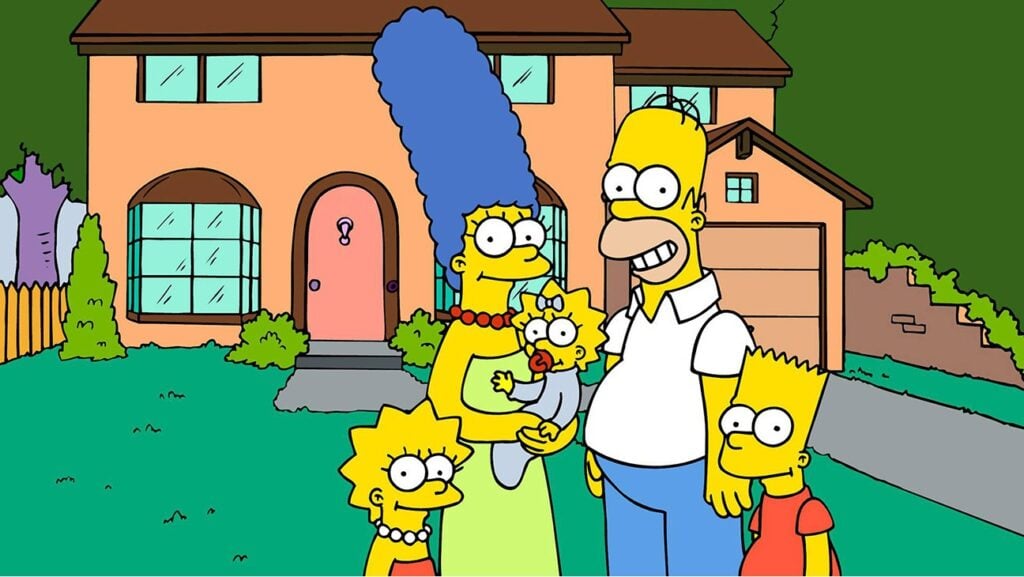
Yes, it’s true. Family sitcoms can be animated. If you’ve been living in a vacuum for 35 years, The Simpsons follows Homer, Marge, Bart, Lisa, and Maggie, who live somewhere in the USA in a town called Springfield. Over its record-breaking run, The Simpsons became essential satire, centered around a dysfunctional but loving family in a dysfunctional world. There’s almost nothing that The Simpsons hasn’t tackled over the years, from pop culture to politics to societal ills and trends, all while maintaining its core family.
The Simpsons’ popularity and longevity are primarily due to its perfect blend of lowbrow humor and intelligent social commentary. Its writing has produced countless moments and phrases that have become unmovable pieces of the cultural lexicon. The show has been around long enough that its subject matter can appeal to multiple generations, and in our house, even episodes from 20 or 30 years ago are laughed at just as much as the contemporary ones. The Simpsons are a cultural institution, but at heart, they maintain the support of a family for each other among the strangest and wildest settings the world has to offer.
Family Ties (1982-1989)
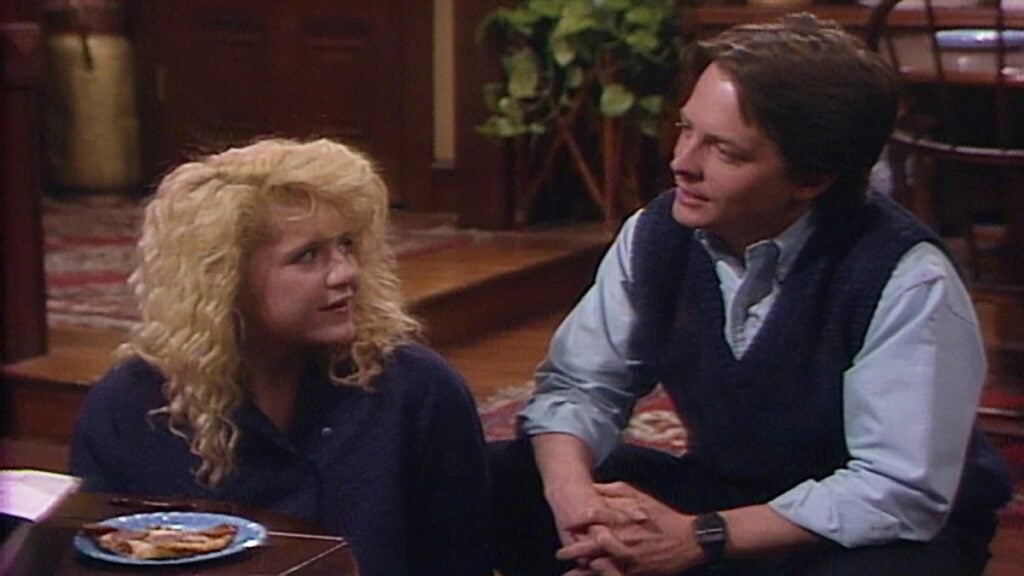
The complete opposite of something like The Simpsons, Family Ties is about as straight-laced as you can get, but with a twist. The Keaton family, headed by liberal parents Steven and Elyse, includes their conservative Republican son, Alex, and his sisters, Mallory and Jennifer. Michael J. Fox’s portrayal of the ambitious, money-obsessed Alex P. Keaton became the show’s breakout element, often overshadowing the original family-centered concept. The show delves into family dynamics more than some of the other sitcoms of the time, demonstrating that disagreeing is possible within a family without it escalating entirely.
Family Ties’ popularity was primarily driven by Michael J. Fox’s charismatic performance as Alex, as well as the portrayal of generational conflict during the Reagan era. It was innovative as it flipped the conventional trope of conservative parents trying to understand their progressive children, and presented a fresh take on generational differences. Family Ties presented political differences with humor rather than hostility, demonstrating that families could disagree on fundamental issues while still loving and supporting one another.
Married… With Children (1987-1997)
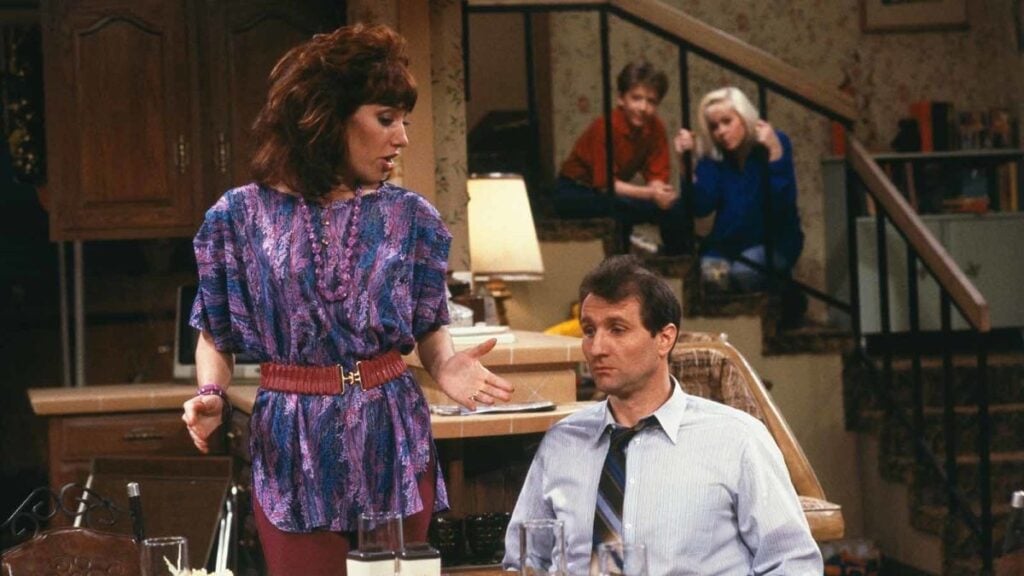
Married… with Children was unique in that it looked at all the other family sitcoms and went the exact opposite way. The Bundy family, Al, Peg, Kelly, and Bud, exemplified dysfunction. Chock full of crude humor and satire, Married… With Children presented a family that, while united, was somewhat miserable in their suburban mediocrity. Unlike other shows of the time, no one really learned lessons or showed genuine growth; however, it was still a hilarious show about the struggles of lower-middle-class individuals.
Married… With Children vowed to break every rule of family television, often using cynicism and complaint to set itself apart from the typical sitcoms airing at the time. It dared to show a family that was openly dysfunctional, selfish, and crude, which many viewers found refreshingly honest or hilariously shocking. It became the predecessor to a slew of irreverent comedies. While it may not be exactly traditional family viewing, it’s still very, very funny and a great trip down memory lane you can take with the teens in your household.
The Goldbergs (2013-2023)
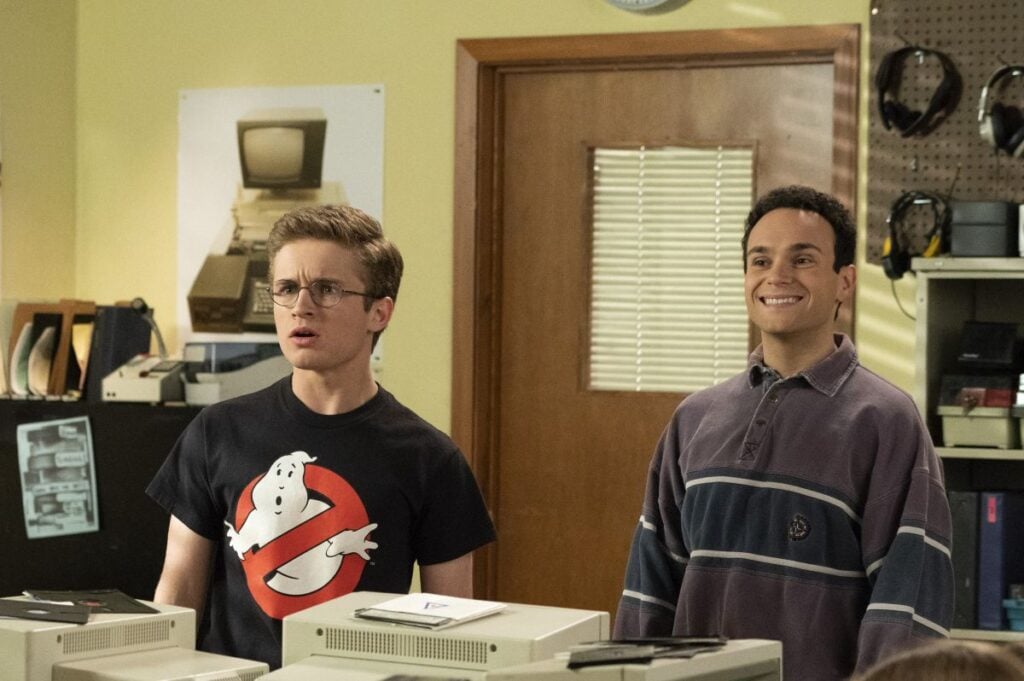
The Goldbergs is something of a new/old show. While it was created and aired in modern times, it was set in the 1980s and presented in a style reminiscent of sitcoms from that era. Narrated by adult Adam Goldberg, the show looks back to when he was 11 years old and effortlessly captures the nostalgia of growing up in the 1980s. Adam’s overbearing mother, Beverly, his gruff father, Murray, his older siblings, Erica and Barry, and his grandfather, “Pops,” all navigate typical family situations. Still, by setting the show in the 1980s, it feels fresh and shows audiences that families may have changed. Still, many aspects of them have remained the same.
The Goldbergs obviously holds a nostalgic place for those of us who grew up in the 1980s. Still, it’s the combined universal themes of family love and adolescent awkwardness that make it stick to an audience that wasn’t around at the time. The authentic recreation of 1980s suburban life, combined with genuine family moments and coming-of-age humor, creates a warm, nostalgic viewing experience that appeals across generations. Plus, your kids will finally know what a “Walkman” is.
Young Sheldon (2017-2024)
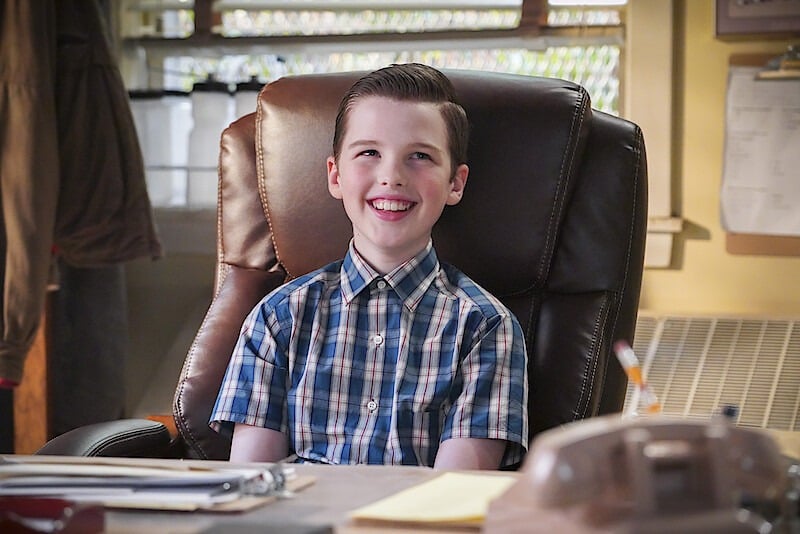
I want to say this right off the top: I do not like The Big Bang Theory. I think it’s a mean-spirited portrayal of a subculture and features some deeply problematic storylines. That said, I was surprised when I watched Young Sheldon, a prequel to The Big Bang Theory, and found it to be a thoughtful show about growing up as an outsider. The show follows 9-year-old Sheldon Cooper, a gifted child, growing up in East Texas. Sheldon’s family often doesn’t understand him (and vice versa), but they maintain love and support for everyone in the family.
Young Sheldon is the polar opposite of its parent show, The Big Bang Theory. It’s full of heart and resolves situations with love and loyalty. The Cooper Family isn’t necessarily dysfunctional, but they are definitely different from their gifted child. This allows the show to explore various themes and ideas in a safe space, where, at the end of the day, you know that they all love each other. There’s also a nostalgia factor, given that the show is set at the tail end of the 1980s and early 1990s.
Schitt’s Creek (2015-2020)
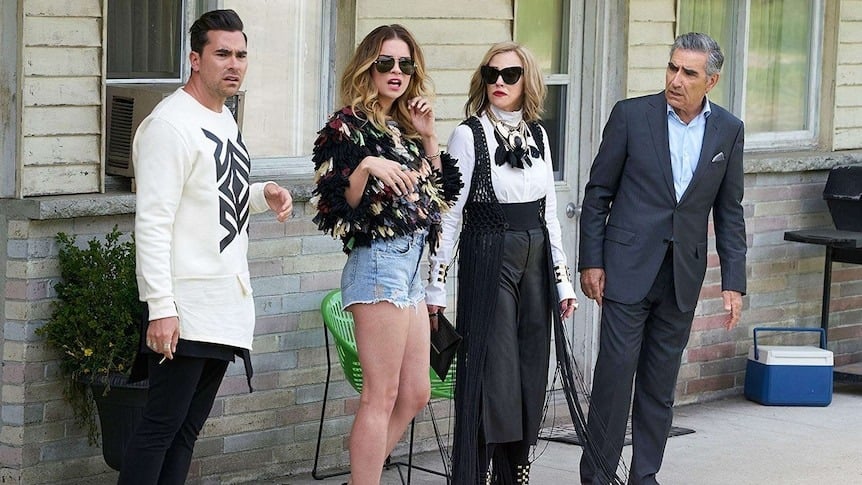
Schitt’s Creek is the fish-out-of-water story of the Rose family, a wealthy crew who lose everything and have to relocate to the tiny town of Schitt’s Creek. Businessman Johnny and actress Moira, parents of David and Alexis, adjust to a modest living arrangement in a motel. Throughout the series, the Roses come to embrace the town and develop genuine relationships with its residents. There are plenty of crazy situations and wild humor as the family grows from self-absorbed and disconnected to caring and community-minded, primarily through David’s relationship with Patrick and the family’s integration into small-town life.
Schitt’s Creek is like a warm cup of honey tea. The premise of the show could have easily led to it being a condescending and mean-spirited show. Instead, it never talks down to characters. It plays off the weirdness of the rural characters and how the Rose family navigates it as they become full-fledged members of the community, opening businesses and becoming proud citizens of the Creek. Coupled with the tight-knit nature of the family, it’s an absolutely heartwarming show that makes you laugh while warming your heart at the same time.
